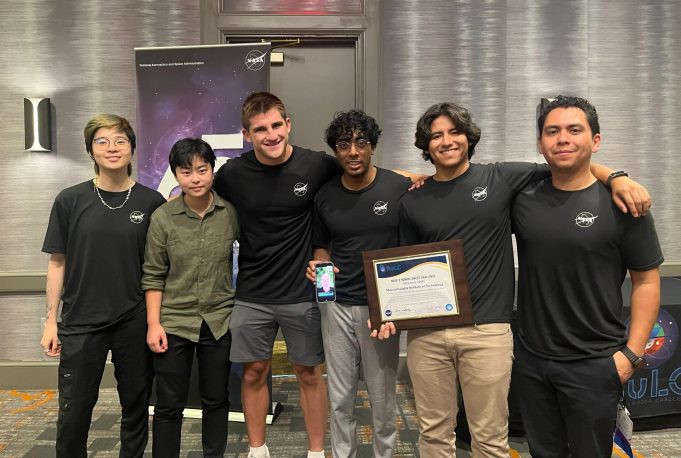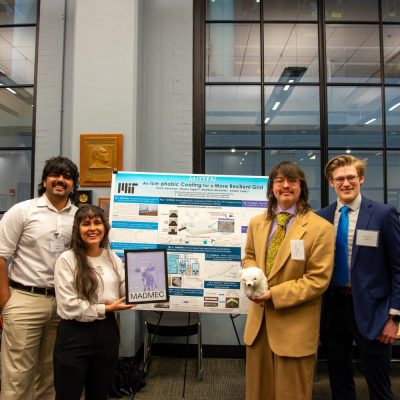
MIT THERMOS places third at NASA’s Human Lander Challenge
The MIT THERMOS (Translunar HEat Rejection and Mixing for Orbital Sustainability) team was awarded Third Place at NASA’s Human Lander Challenge in Huntsville, Alabama. Advised by Prof. Jeff Hoffman, Prof. Olivier de Weck, and researcher George Lordos, the team competed against top student engineering groups from across the country in this year’s challenge, which focused on designing a cryogenic fluid management subsystem to support future Artemis Human Landing System (HLS) missions.
THERMOS is a systems-level approach designed to extend the endurance of cryogenic Human Landing System (HLS) spacecraft—such as SpaceX’s Starship HLS—to support successful Artemis missions. Beginning in October 2024, the team developed a model-based environment to evaluate active, passive, and hybrid cooling technologies, assessing their impact using mission-level metrics including Lunar Ascent Propellant Margin (LAPM), the number of required tanker deliveries, and a Relative Schedule Risk metric based on summed technology readiness level (TRL) gaps. Their solution, compatible with both V2 or V3 Starships, includes a structural MLI system with thermal, structural and mass synergies with a Broad Area Cooling system, along with innovative propellant mixing baffles inspired by the hydrodynamic shapes of ship propellers.
During the Q&A session, judges shared enthusiastic feedback on the team’s work, highlighting the strength of the team’s systems engineering approach and the relevance of their focus on mission-critical metrics like Lunar Ascent Propellant Margin.
The team is grateful to the Massachusetts Space Grant for the support, and plans to use their winning stipend to publish their research.
The team: Nicole Ding ’27, Beverly Ma ’26, Stone Smith ’27, Pranav Bala ’27, Daniel Rojas ’27, and advisors George Lordos, Prof. Olivier de Weck, and Prof. Jeff Hoffman

